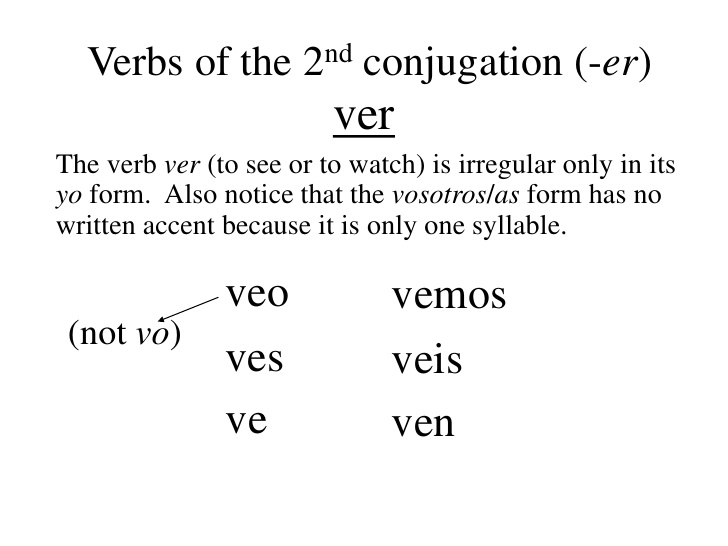
The verb "ver" in Spanish means "to see."
Let's conjugate the verb to match each subject pronoun. You didn't forget your subject pronouns, did you?
Yo = I
tú = you
él= he
ella = she
usted = you (formal)
nosotros(as) = we (masc. and fem.)
vosotros (as) = you all (Spain)
ustedes = you all (Latin American + Spain (formal)
ellos(as) = they
Ok, so for the yo form, it's irregular. Normally we take the verb (ver) and take off the -AR, -ER, or -IR ending and replace it with our verb endings, but for ver, we just take off the -R for the yo ending.
Here are the conjugations for the present tense:
yo veo = I see
tú ves = you see
él/ella/usted ve = he/she/you (formal) see(s)
nosotros vemos = we see
vosotros veis = you all (Spain) see
ustedes/ellos(as) ven you all (L.A. + Spain (formal)/they see
Keep in mind that the "V" in Spanish sounds much more like an English "B" so you would say "bay-oh" instead of "vay-oh". Now I'd like to give you some example sentences so that you can see the conjugated verbs in their own context.
Yo veo las flores del campo. = I see the flowers from the field.
Tú ves un hombre alto. = You see a tall man.
Él ve una película. = He's watching a movie.
Nosotros vemos el desfile. = We watch the parade.
Vosotros veis el coche. = You guys see the car. (Spain)
Ellos ven la luna. = They are looking at the moon.
Hope this helps you if you're learning Spanish!
Please follow and upvote for more content!